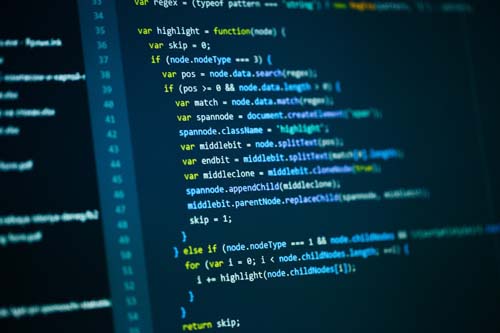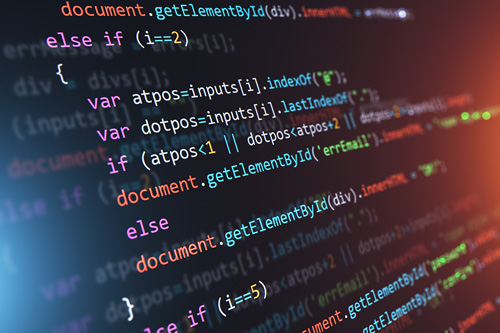Golang与区块链实战Golang构建区块链应用
Golang与区块链:实战Golang构建区块链应用

区块链是近年来备受热议的技术,它的去中心化、不可篡改、高可信任等特点吸引了众多开发者的关注。而Golang则是一种高效、简洁、安全的编程语言,它在区块链领域也有着广泛的应用。本文将介绍如何利用Golang构建一个简单的区块链应用。
1. 什么是区块链?
区块链是一种基于分布式账本技术的数据库系统,它的最大特点是去中心化、不可篡改和高可信任。区块链的核心思想是将数据以区块的形式记录在链上,每个区块都包含了前一个区块的哈希值,形成了一个不可篡改的链式结构。这种结构可以确保数据的安全性和透明度,避免了单点故障和数据篡改等问题。
2. Golang在区块链中的应用
Golang是一种基于C语言的静态编译型语言,它具有高效、简洁、安全等特点,适合开发分布式系统和高并发应用。在区块链领域,Golang的应用比较广泛,比如以太坊的核心代码就是用Golang编写的。
Golang的高性能和并发特性使得它特别适合用于构建区块链节点、钱包等应用,同时也可以用于智能合约的编写。
3. 构建简单的区块链应用
接下来,我们将利用Golang构建一个简单的区块链应用。主要包括区块链结构、区块生成、区块链遍历等功能。
3.1 区块链结构
我们首先定义区块的结构,包括区块头、交易数据和哈希值等信息。
type Block struct {
// 区块头
Timestamp int64 // 时间戳
PrevBlockHash byte // 上一个区块的哈希值
Hash byte // 当前区块的哈希值
// 交易数据
Data byte
}
然后定义区块链的结构,包括区块链的长度和最后一个区块的哈希值等信息。
type Blockchain struct {
blocks *Block // 区块链
}
3.2 区块生成
接下来,我们需要实现区块的生成函数,该函数用于生成新的区块并添加到区块链中。
func (bc *Blockchain) AddBlock(data string) {
prevBlock := bc.blocks // 取出最后一个区块
newBlock := NewBlock(data, prevBlock.Hash)
bc.blocks = append(bc.blocks, newBlock) // 添加到区块链
}
其中,NewBlock函数用于生成新的区块。
func NewBlock(data string, prevBlockHash byte) *Block {
block := &Block{time.Now().Unix(), prevBlockHash, byte{}, byte(data)}
pow := NewProofOfWork(block) // 创建工作量证明
nonce, hash := pow.Run() // 执行工作量证明
block.Hash = hash
return block
}
这里涉及到了工作量证明(Proof of Work),它是保证区块链安全性的关键机制之一。工作量证明需要通过不断尝试计算哈希值来找到满足一定条件的哈希值,这个过程需要大量的计算和耗费大量的时间,从而确保了数据的不可篡改性。
3.3 区块链遍历
最后,我们需要实现区块链的遍历函数,该函数用于遍历整个区块链,并输出区块的详细信息。
func (bc *Blockchain) Print() {
for _, block := range bc.blocks {
fmt.Printf("Timestamp: %d\n", block.Timestamp)
fmt.Printf("PrevBlockHash: %x\n", block.PrevBlockHash)
fmt.Printf("Hash: %x\n", block.Hash)
fmt.Printf("Data: %s\n", block.Data)
fmt.Println()
}
}
至此,一个简单的区块链应用就完成了。完整代码如下:
package mainimport ( "bytes" "crypto/sha256" "fmt" "math" "math/big" "strconv" "time")const targetBits = 24type Block struct { // 区块头 Timestamp int64 // 时间戳 PrevBlockHash byte // 上一个区块的哈希值 Hash byte // 当前区块的哈希值 Nonce int // 工作量证明 // 交易数据 Data byte}type Blockchain struct { blocks *Block // 区块链}type ProofOfWork struct { block *Block target *big.Int}func NewProofOfWork(b *Block) *ProofOfWork { target := big.NewInt(1) target.Lsh(target, uint(256-targetBits)) return &ProofOfWork{b, target}}func (pow *ProofOfWork) prepareData(nonce int) byte { data := bytes.Join( byte{ pow.block.PrevBlockHash, pow.block.Data, IntToHex(pow.block.Timestamp), IntToHex(int64(targetBits)), IntToHex(int64(nonce)), }, byte{}, ) return data}func (pow *ProofOfWork) Run() (int, byte) { var hashInt big.Int var hash byte nonce := 0 for nonce < math.MaxInt64 { data := pow.prepareData(nonce) hash = sha256.Sum256(data) fmt.Printf("\r%x", hash) hashInt.SetBytes(hash) if hashInt.Cmp(pow.target) == -1 { break } else { nonce++ } } fmt.Print("\n\n") return nonce, hash}func (bc *Blockchain) AddBlock(data string) { prevBlock := bc.blocks // 取出最后一个区块 newBlock := NewBlock(data, prevBlock.Hash) bc.blocks = append(bc.blocks, newBlock) // 添加到区块链}func IntToHex(n int64) byte { return byte(strconv.FormatInt(n, 16))}func NewBlock(data string, prevBlockHash byte) *Block { block := &Block{time.Now().Unix(), prevBlockHash, byte{}, 0, byte(data)} pow := NewProofOfWork(block) // 创建工作量证明 nonce, hash := pow.Run() // 执行工作量证明 block.Hash = hash block.Nonce = nonce return block}func NewGenesisBlock() *Block { return NewBlock("Genesis Block", byte{})}func NewBlockchain() *Blockchain { return &Blockchain{*Block{NewGenesisBlock()}}}func (bc *Blockchain) Print() { for _, block := range bc.blocks { fmt.Printf("Timestamp: %d\n", block.Timestamp) fmt.Printf("PrevBlockHash: %x\n", block.PrevBlockHash) fmt.Printf("Hash: %x\n", block.Hash) fmt.Printf("Nonce: %d\n", block.Nonce) fmt.Printf("Data: %s\n", block.Data) fmt.Println() }}func main() { bc := NewBlockchain() bc.AddBlock("hello world") bc.AddBlock("hello blockchain") bc.AddBlock("hello Golang") bc.Print()}4. 总结
本文介绍了Golang在区块链领域的应用,并通过一个简单的示例演示了如何利用Golang构建一个区块链应用。区块链作为一种新兴的技术,具有很高的应用价值和前景,未来将有更多的开发者加入其中,推动它的发展和壮大。

相关推荐HOT
更多>>
详解Go语言中的数据结构和算法
近年来,Go语言逐渐成为了一门备受欢迎的编程语言。它以其卓越的并发性和高效的性能而闻名于世。而要想在Go中获得最佳的性能表现,数据结构和算...详情>>
2023-12-22 22:35:28
Golang中的数据结构和算法
Golang中的数据结构和算法——如何在Golang中高效地实现常见的数据结构和算法Go语言(Golang)是一种越来越受欢迎的编程语言,因为它简单、高效、...详情>>
2023-12-22 20:11:28
Shell脚本你的自动化工具箱
Shell脚本:你的自动化工具箱作为一位运维人员,相信大家都有过手动重复操作的经历。这除了会浪费大量的时间和精力,还会增加出错的概率。而She...详情>>
2023-12-22 04:35:27
Golang与微服务构建高可用分布式系统的最佳实践
Golang与微服务:构建高可用分布式系统的最佳实践随着云计算的兴起,越来越多的企业开始采用微服务架构来构建高可用的分布式系统。在这个过程中...详情>>
2023-12-22 02:11:27





















 京公网安备 11010802030320号
京公网安备 11010802030320号